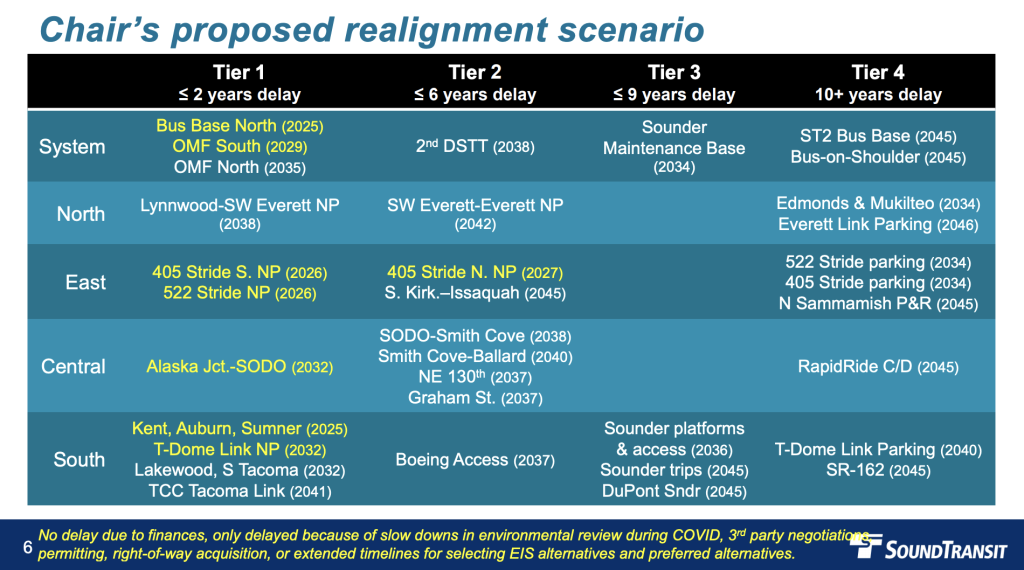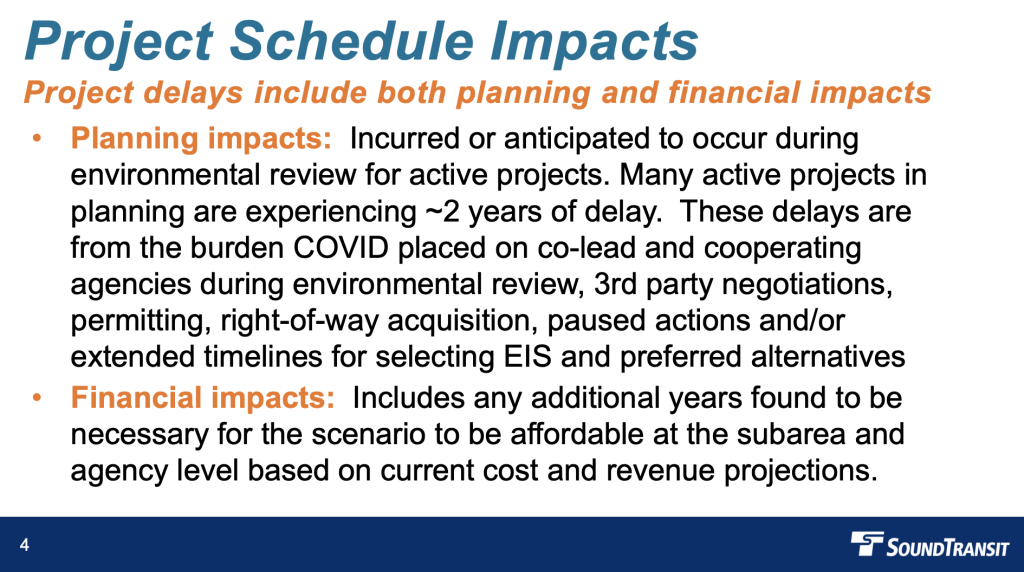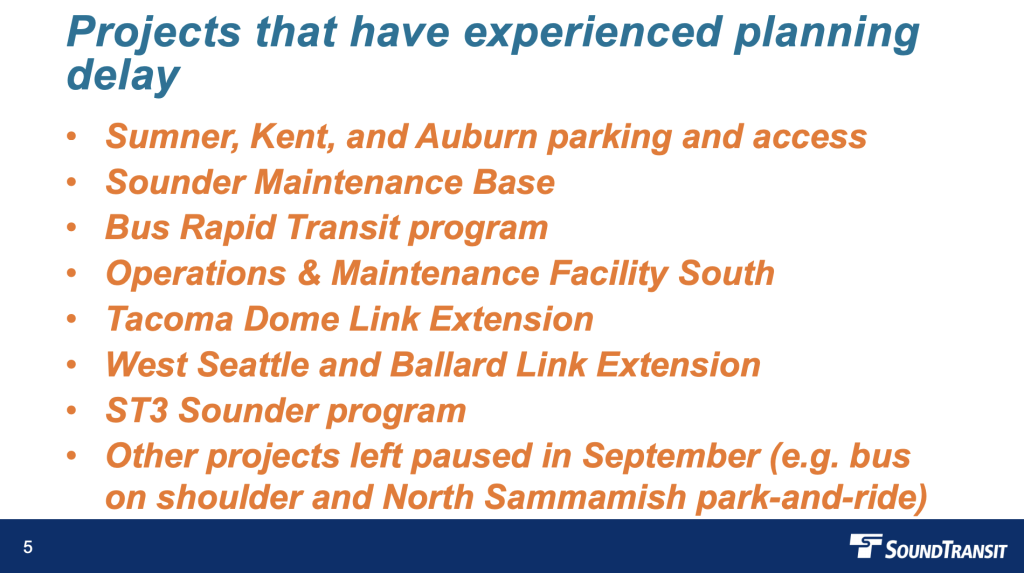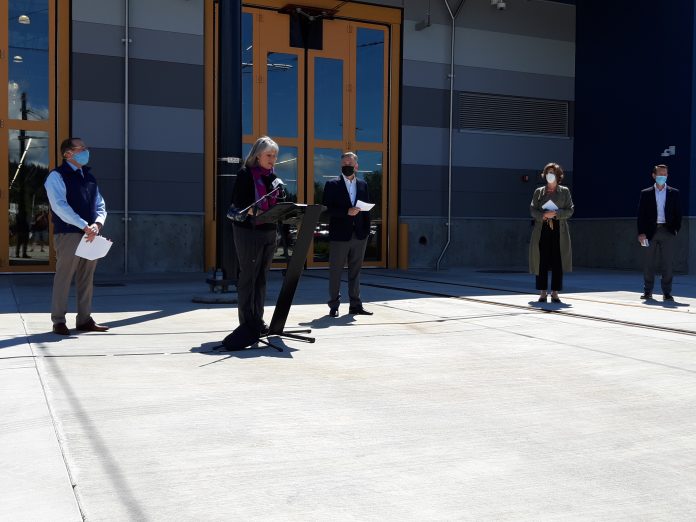
Whether or not the Sound Transit 3 (ST3) program will wind up delayed by more than a decade remains a hotly contested issue. Kent Keel, Chair of the Sound Transit Board of Directors, has laid out his realignment plan that would cement dramatic delays to many regional transit projects in order to solve a $7.9 billion affordability gap. King County Councilmember Claudia Balducci is pushing back on Keel’s plan as she races to wrap up her alternative that would try to salvage project schedules. But headwinds from the agency and some boardmembers seem to be pushing against a will to find solutions to avoid long delays.
Balducci’s fights for an alternative realignment plan
During last week’s Executive Committee meeting, Balducci talked about her work on an alternative realignment plan and unveiled an initial amendment to Keel’s realignment framework resolution.
In centering her discussion on the cause of salvaging ST3 timelines, she said: “We had a very significant and shocking wake-up call on climate just in the last few days and what that could really look like and mean if we don’t hit our marks. We’ve heard from people who depend on our services to get around and participate fully in the economy and in life. We’ve made some big promises to the voters when we went out with this plan.”
Balducci walked through the history of the affordability gap, which started last year as a result of cratering revenues from the pandemic and then grew early this year as new project costs were identified. Then in April, revenue forecasts improved as the country and region recovered, leaving most of the shortfall due to project cost increases. New revenue forecasts due next week could further improve the financial picture along with favorable federal Transportation Infrastructure Finance and Innovation Act (TIFIA) loan refinancing terms this month that could save up to $380 million. Fundamentally, Balducci’s point was that the reason for realignment had changed — a point many boardmembers have reiterated in recent months.
Connecting that background, Balducci argued that the realignment process should be adjusted with a different plan. “We’re not doing budgeting here, we’re doing long-range planning. This is a plan that now goes out to the 2040s and so we have some flexibility in how we do what we do here,” she said. “I don’t feel that we’re boxed into a situation where we must use the lever of schedule delay to address the very real challenges that we have before us. There are other ways to address it.”
Balducci emphasized that the realignment process doesn’t have to be so heavy-handed with significant delays and that many tools could be assumed to salvage project schedules. “I think that we can hold to schedules far more closely and in many cases maybe exactly that we proposed in the ST3 program by doing a few things. First, we attack this…cost gap that we have,” she said. “We can assume realistic opportunities for future revenues when we do planning. We can assume a realistic amount of income off of our existing legal revenues.”
Outlining other strategies to salvage project schedules, Balducci continued. “We can look at different assumptions about financing like TIFIA loans and we can assume other grant applications. We can assume local jurisdictions taking relatively new tax increment financing tools that the legislature just passed,” she said. “We could set a goal for cost efficiencies that we put a bar… realistically above our heads and say ‘we’re going to save a certain amount of cost.’ We can assume that now and fight to reach that bar.”
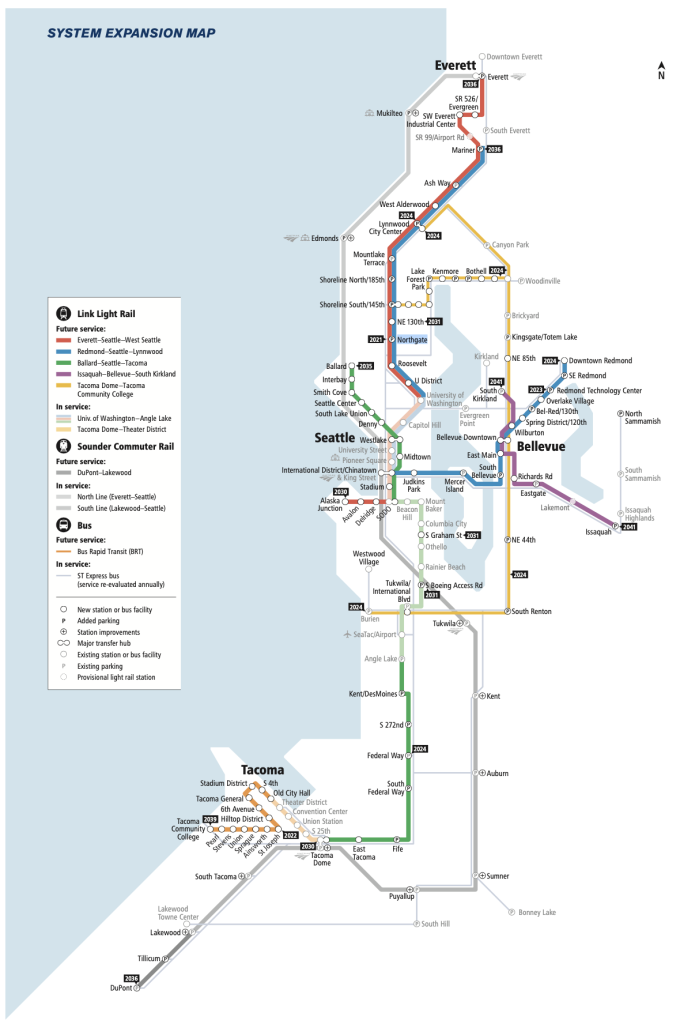
Balducci’s approach appears to be quite a departure from Keel’s realignment plan — which would not do this work now and immediately seek delays instead — but may run into challenges. Sound Transit CEO Peter Rogoff did flag a possible issue in relation to Balducci’s approach for boardmembers. He said that the agency uses a more conservative and constrained financial plan model for assuming projects to be funded. This differs from the type of regional long-range planning projects that are assumed to be funded by the Puget Sound Regional Council.
Some boardmembers were not keen on giving Balducci the extra time she needs to finish up her alternative. Pierce County Executive Bruce Dammeier wanted to move ahead with a late July vote on realignment, saying only that Balducci could always come back to the board later with her plan for consideration. Fife Mayor Kim Roscoe also felt that a July vote should go forward. Meanwhile, King County Executive Dow Constantine and King County Councilmember Joe McDermott were inclined to give Balducci more time.
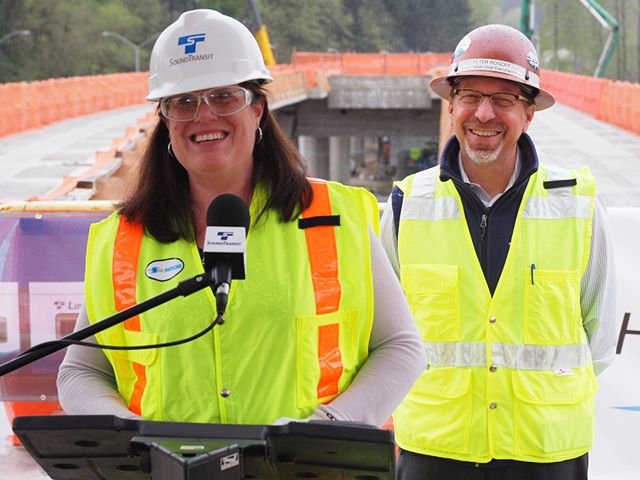
As far as Balducci’s initial amendment goes, it would affect Keel’s base realignment framework resolution, not realignment of individual projects. The biggest things it would include are:
- A clearer requirement for development of a cost savings work plan on all ST3 projects with quarterly reports to the board;
- A requirement that an independent consultant reports to the board on review of the cost savings work plan and structure of a new proposed annual review program;
- A requirement that the agency swiftly reports to the board if any information comes to the light that would impact project cost or schedule; and
- A requirement that the new annual review program includes a written report by September 1st each year and that the reports provides details on specific items like an updated 25-year financial plan using new revenue and cost assumptions, information on projects with cost increases of 5% or more over the realignment plan, and staff-recommended adjustments to ST3 projects.
Whether or not Balducci’s amendment will pass or if she’ll get extra time to deliver her alternative remains to be seen.
Sound Transit tries to justify sooner realignment action
Still, Sound Transit staff said that project delays are piling up that have little to do with financial delays, and that’s a problem, staff suggested, because taking longer to decide on realignment could further delay projects. All things being equal, the agency noted, projects like the Alaska Junction-SODO and Tacoma Dome Link Extensions could be completed in 2030 instead of 2032 if they weren’t experiencing “planning impacts” of approximately two years. A presentation noted many of the contributing factors to the delays: “These delays are from the burden Covid placed on co-lead and cooperating agencies during environmental review, third-party negotiations, permitting, right-of-way acquisition, paused actions, and/or extended timelines for selecting EIS and preferred alternatives.” These clarifications on delay factors seem to be in response to skepticism of the prior assertions of Covid impacts to timelines that strained credulity. Some context worth considering in relation to this all includes the following:
- The pandemic has not been going on for two years and projects have largely not stalled out for the duration of it.
- Sound Transit scheduled many early planning actions on projects so that if schedule impacts came or extra funding became available, projects could still be completed on-time or ahead of schedule.
- The agency was able to unpause many projects actions last year to advance work and that could be done again now on a limited interim scope, if desired by the board.
- Some of the delays were clearly self-inflicted like the Ballard and West Seattle Link Extensions where extra time was taken to consider alternatives as part of the environmental review process.
- The agency has ample time for most projects to pick up the pace.
Suffice it to say, most of this goes toward pointing back at internal failures of the agency to lose so much time in the period of four years, much of which must have occurred prior to the pandemic.
Of course, there are some things that are partially out of the agency’s hands like the I-405 Stride North project. The project is heavily dependent on the Washington State Department of Transportation (WSDOT) completing its northern I-405 high occupancy toll (HOT) lanes expansion. WSDOT is well behind schedule on the project due in large part to financial troubles. This demonstrates how unwise it is to supersize a project and bank on a third-party like the state to deliver much of it. Yet, nothing is stopping Sound Transit from starting the line earlier without use of HOT lanes and median freeway stops — traditional freeway ramp stops with basic transit shelters could be used in the interim while providing high frequency service and better vehicles, for instance.
Needless to say, there’s a lot of energy going into justifying delays rather than finding solutions to get critical regional projects back on schedule. Councilmember Balducci seems to be one of the vocal few that are laser-focused on the latter and fortunately it appears that she may be close to a solution, but will it be all for naught? Time will tell.
Stephen is a professional urban planner in Puget Sound with a passion for sustainable, livable, and diverse cities. He is especially interested in how policies, regulations, and programs can promote positive outcomes for communities. With stints in great cities like Bellingham and Cork, Stephen currently lives in Seattle. He primarily covers land use and transportation issues and has been with The Urbanist since 2014.

